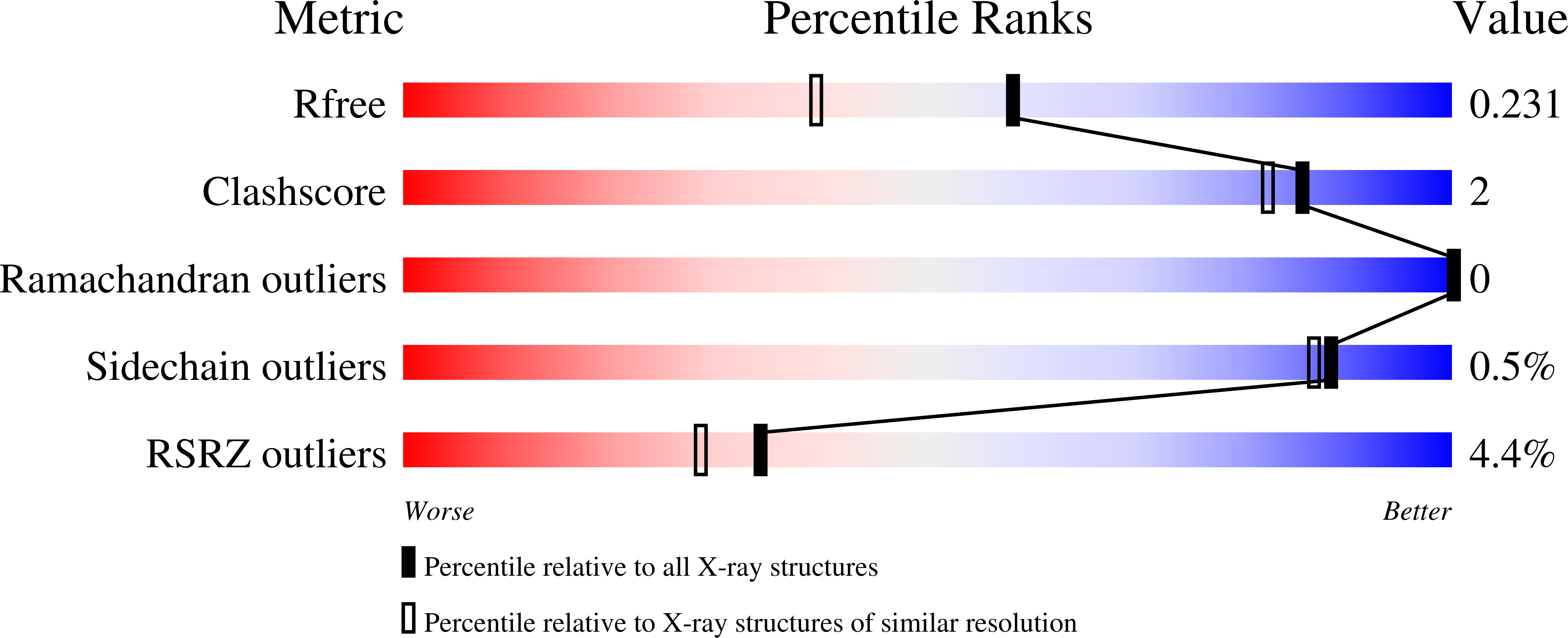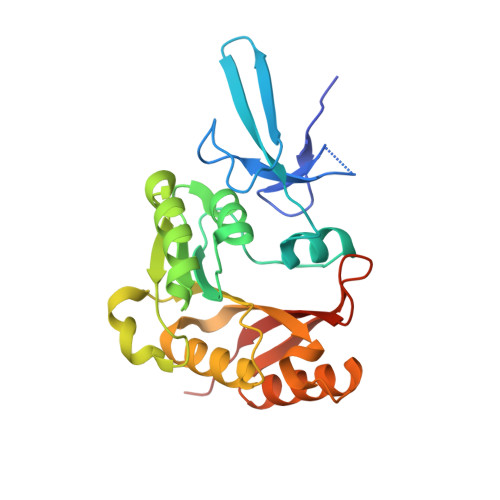Discovery of Cofactor Competitive Inhibitors against the Human Methyltransferase Fibrillarin.
Shi, Y., El-Deeb, I.M., Masic, V., Hartley-Tassell, L., Maggioni, A., Itzstein, M.V., Ve, T.(2021) Pharmaceuticals (Basel) 15
- PubMed: 35056083
- DOI: https://doi.org/10.3390/ph15010026
- Primary Citation of Related Structures:
7SE6, 7SE7, 7SE8, 7SE9, 7SEA, 7SEB, 7SEC, 7SED - PubMed Abstract:
Fibrillarin (FBL) is an essential and evolutionarily highly conserved S-adenosyl methionine (SAM) dependent methyltransferase. It is the catalytic component of a multiprotein complex that facilitates 2'- O -methylation of ribosomal RNAs (rRNAs), a modification essential for accurate and efficient protein synthesis in eukaryotic cells. It was recently established that human FBL (hFBL) is critical for Nipah, Hendra, and respiratory syncytial virus infections. In addition, overexpression of hFBL contributes towards tumorgenesis and is associated with poor survival in patients with breast cancer, suggesting that hFBL is a potential target for the development of both antiviral and anticancer drugs. An attractive strategy to target cofactor-dependent enzymes is the selective inhibition of cofactor binding, which has been successful for the development of inhibitors against several protein methyltransferases including PRMT5, DOT1L, and EZH2. In this work, we solved crystal structures of the methyltransferase domain of hFBL in apo form and in complex with the cofactor SAM. Screening of a fluorinated fragment library, via X-ray crystallography and 19F NMR spectroscopy, yielded seven hit compounds that competed with cofactor binding, two of which resulted in co-crystal structures. One of these structures revealed unexpected conformational variability in the cofactor binding site, which allows it to accommodate a compound significantly different from SAM. Our structural data provide critical information for the design of selective cofactor competitive inhibitors targeting hFBL, and preliminary elaboration of hit compounds has led to additional cofactor site binders.
Organizational Affiliation:
Institute for Glycomics, Griffith University, Southport, QLD 4222, Australia.
















